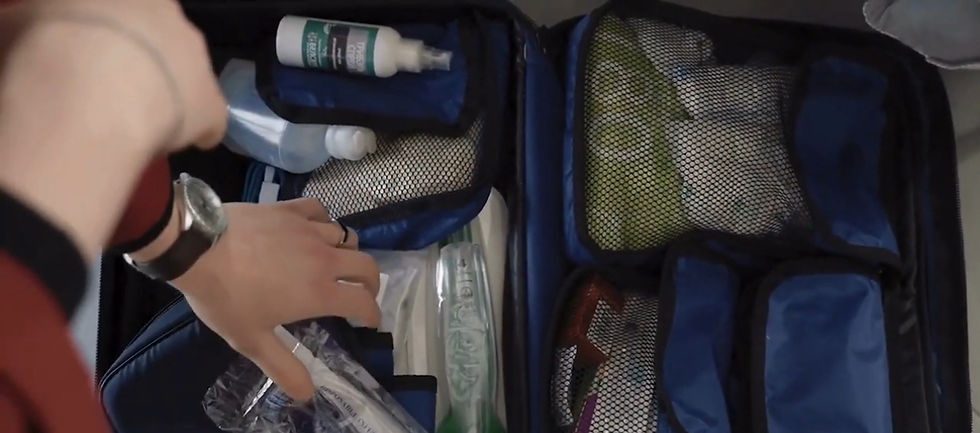What to Do in Cat Homes Before, During, and After an Earthquake
- Lola ve Loki

- Apr 26
- 3 min read
An earthquake is a challenging and frightening natural event. For pet owners, it can become even more complicated. While every situation is unique, the information here is designed to help make a difficult time a little more manageable for you and your cat.
Here’s what you need to know and do before, during, and after an earthquake when you have a cat at home:
Pre-Earthquake Preparations – Life-Saving Planning

Prepare an Emergency Kit
In addition to your own emergency kit, prepare one specifically for your cat. It should include:
• Long shelf-life packaged cat food
• Clean drinking water
• Collapsible food and water bowls
• A small, preferably collapsible, litter box and cat litter
• A carrier (easily accessible)
• A collar with an ID tag (including your name and phone number)
• A photocopy of your cat’s medical records and any regular medications
• A favorite blanket or toy (familiar scents can provide comfort)
• Stress-relief products (pheromone sprays, natural calming drops, or treats)
• A reflective or glow-in-the-dark collar (important for rescue visibility)
• Paper towels and wet wipes
Training with Collar and Carrier
Get your cat accustomed to wearing a collar and using the carrier. Leave the carrier open in a cozy corner with treats inside to create positive associations.
Make sure your cat has an ID tag, and if they are not microchipped yet, it's highly recommended to get one.
Securing the Home

• Secure heavy items on shelves.
• Block off inaccessible hiding spots that could trap your cat during an emergency.
• Create safe hiding areas like under sofas or beside beds.
• Take precautions with windows and doors to prevent falls during panic.
What to Do During an Earthquake
Your first priority is your own safety. Take cover under a sturdy table or next to a sofa. Your cat will likely try to find a hiding place; trying to grab them may cause injuries to you or further panic for the cat.
Stay calm. Unless it’s safe and easy to place them into their carrier, let them hide until the shaking stops.
After the Earthquake – The First Hours and Days

If You Cannot Find Your Cat:
• Carefully check every room: closets, under beds, behind furniture, even inside appliances.
• Call their name softly and use familiar sounds like shaking a treat bag.
• Close all doors and windows immediately to prevent escape.
If You Find Your Cat and Evacuation is Necessary:
• Calmly place your cat in the carrier.
• If a carrier is unavailable, use a clean blanket or a large, sturdy bag as a temporary solution.
• Before evacuating to a shelter, check if they accept pets.
If the Building Has Collapsed and Your Cat is Inside:

• Inform search and rescue teams immediately.
• Describe your cat’s favorite hiding spots.
• Provide a floor plan of your home if available, along with your cat’s photo and details in writing.
• Leave their carrier, blanket, and some food and water at a safe distance to attract them if they escape.
• Call your cat’s name calmly but never enter unstable buildings yourself.
Staying Outside and Temporary Shelter
If you cannot return home:
• Create a safe, quiet space for your cat.
• Minimize contact with unfamiliar animals.
• Stay close, talk to your cat, and keep their favorite items nearby for comfort.
Remember:
Being prepared can save both your life and your cat’s. We hope you will never need to use this information, but it's always better to be ready.
👉 Please share this information to help raise awareness and protect more pets and their families.




Comments